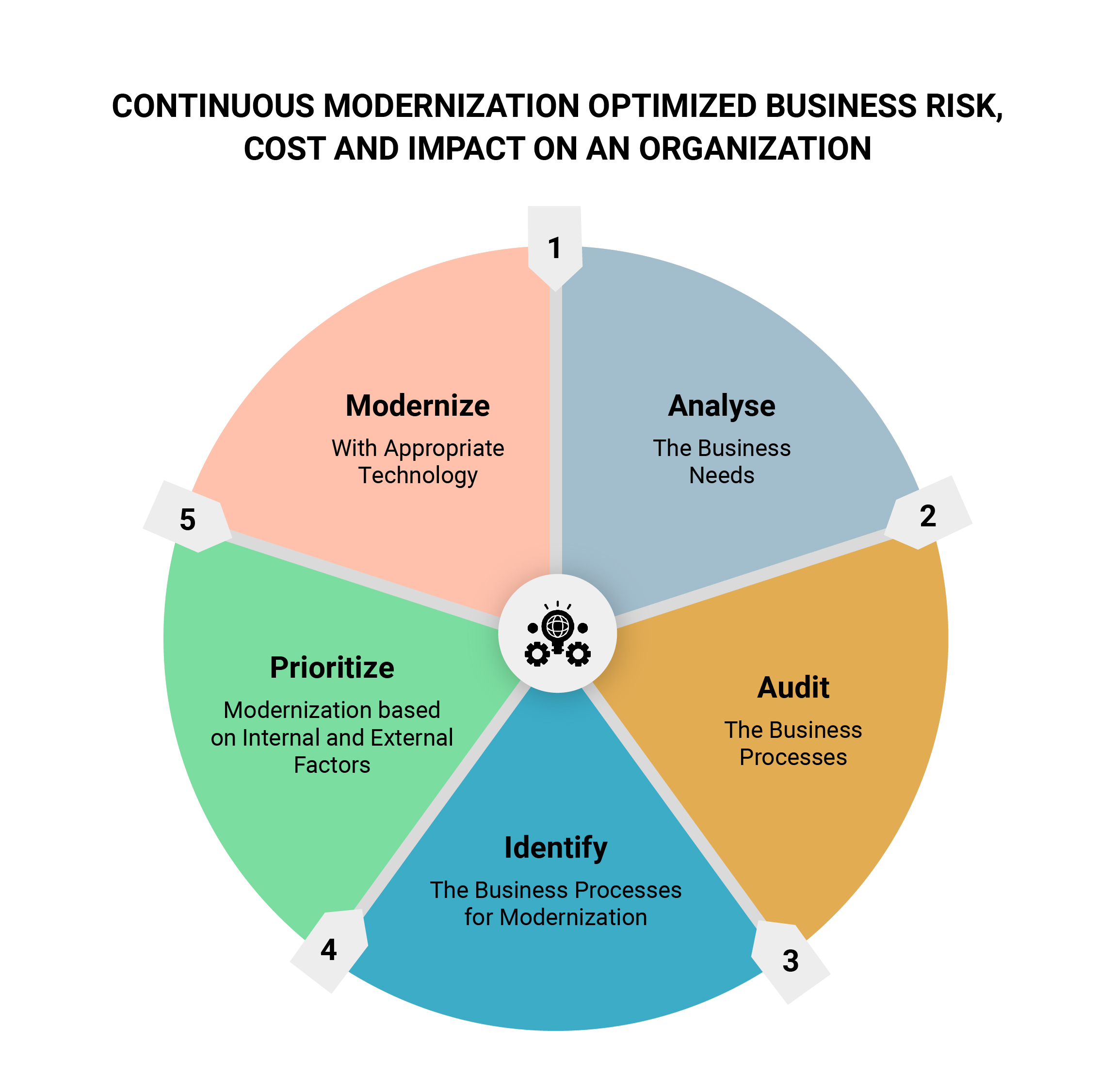Adapting to Change: The Power of Continuous Modernization

In the past 25 years, Excelsoft has successfully modernized its products and enhanced its capabilities to stay relevant in the market. We’ve partnered with multiple clients to redesign and replace legacy applications, resulting in increased cost savings, scalability, and flexibility. To quote a few examples, we assisted a U.S.-based civil services organization in making significant cost savings in license fees by modernizing their mainframe with our assessment system while maintaining seamless business operations. We transformed an international testing company’s monolithic to modern microservices architecture.
This blog shares our insights and perspectives on modernization based on our extensive experience.
Legacy applications hinder organizations from adopting newer and more efficient processes, improving customer experience, and utilizing digital channels to grow their business. They can also lead to increased security risk and missed opportunities for innovation. So, modernization is inevitable to stay relevant in the marketplace.
Modernizing legacy systems can be daunting due to resistance to change, potential operational disruptions, and cost. Despite the challenges, modernization’s medium—and long-term benefits far outweigh the short-term pain that could result from the transition.
Implementing a modernization project should begin with analyzing the business needs and then choosing the right technology to satisfy the demands. Analysis of business needs will involve relooking into all the business processes of all business verticals and identifying businesses that need to modernize as a priority. Prioritization could be done based on internal and external factors. Internal factors include the current platform’s problems, support from the current platform vendor, workforce availability to sustain the current platform, and internal stakeholder satisfaction. External factors could include competitive pressures, supporting new business opportunities, and regulatory changes. This process is captured in the diagram below.

Modernization can be either a big-bang or continuous. Generally, the big-bang approach is not preferred given the business risk, cost, and the widespread impact it can create in the organization. For many organizations, legacy applications perform vital functions and store valuable information. Therefore, the most preferred approach is the continuous approach where an organization continuously evolves the existing architecture to incorporate emerging technologies in the core business. This could involve auditing the application landscape and modernizing applications which are high priority for modernization.
Modernization must be carried out in three ways at an individual application level for the best impact.
- Rearchitect – Shift to a new application architecture and utilize its improved capabilities.
- Rebuild – Re-write the application from scratch while preserving its functionality.
- Replace – Eliminate and replace the application with a new COTS or custom application that satisfies the requirements.
All these methods are critical for organizations to manage increased data loads, improve maintenance, improve user experience, and drive cost efficiencies
Rearchitecting is less costly and less risky than other options. However, for the best results, it is necessary to rebuild or replace the existing application. The stakeholders need to evaluate all the options and choose the option that provides the maximum impact with the least effort.
In conclusion, just as a snake sheds its skin, organizations must shed a legacy to stay relevant. Modernizing legacy applications is essential for organizations seeking to enhance efficiency, improve customer experiences, and stay competitive in a rapidly evolving digital landscape. While the challenges of transition are significant, investing in continuous modernization not only mitigates these challenges but also provides a solid foundation for sustainable growth, ensuring that organizations remain agile and future-ready.

